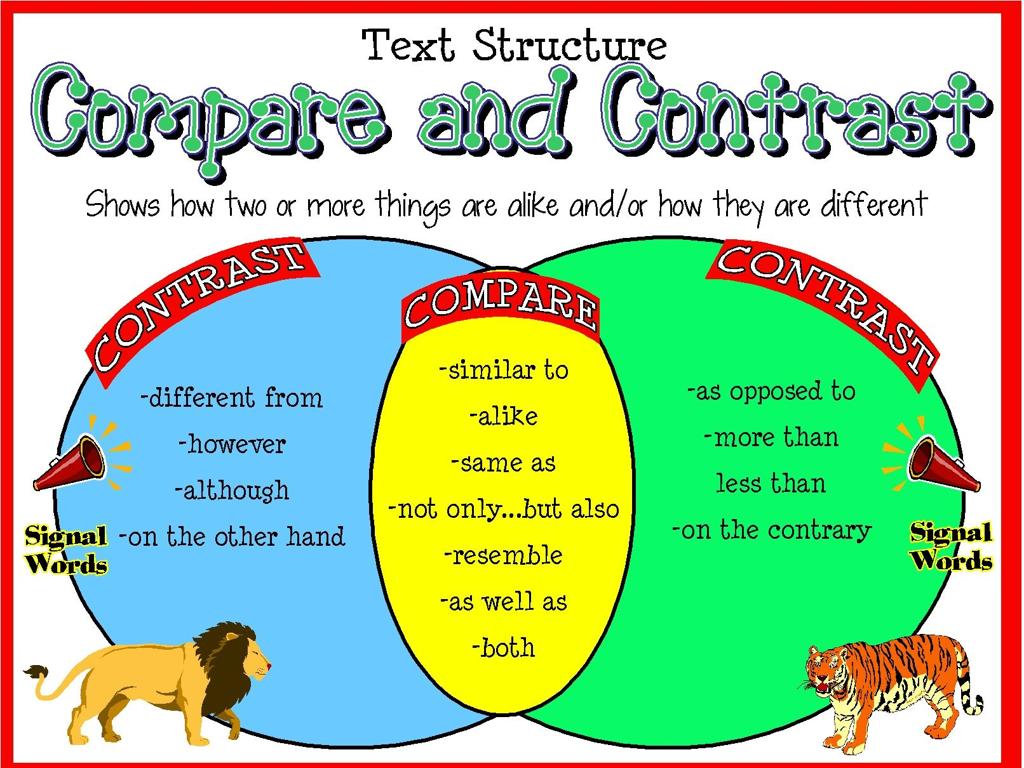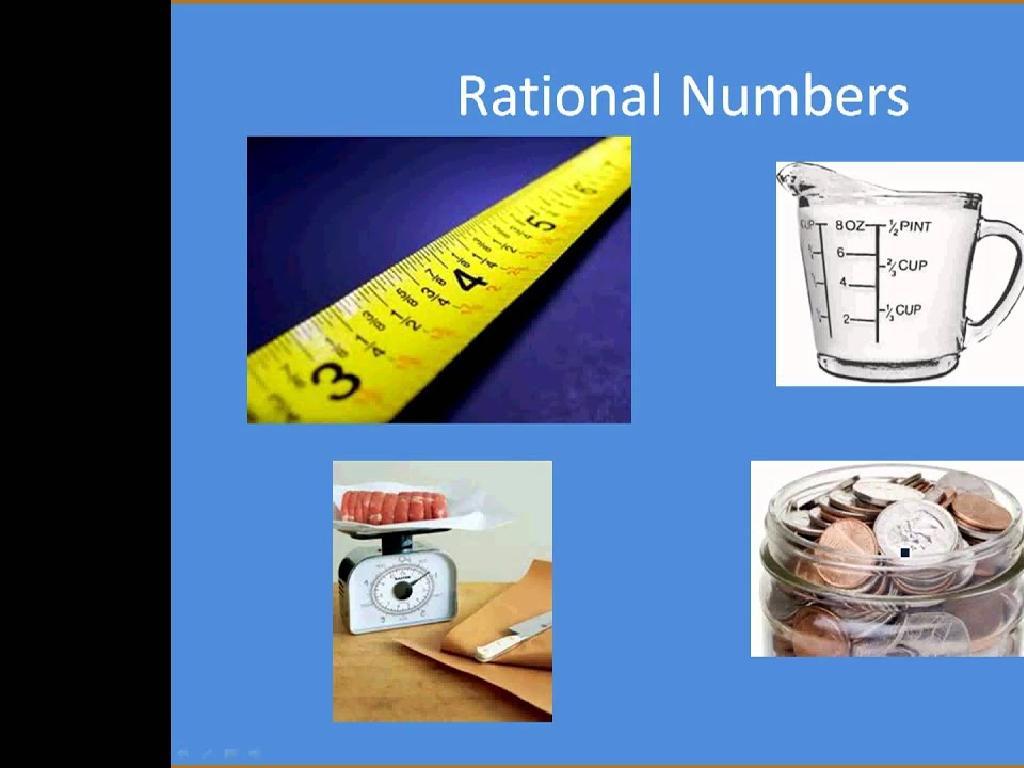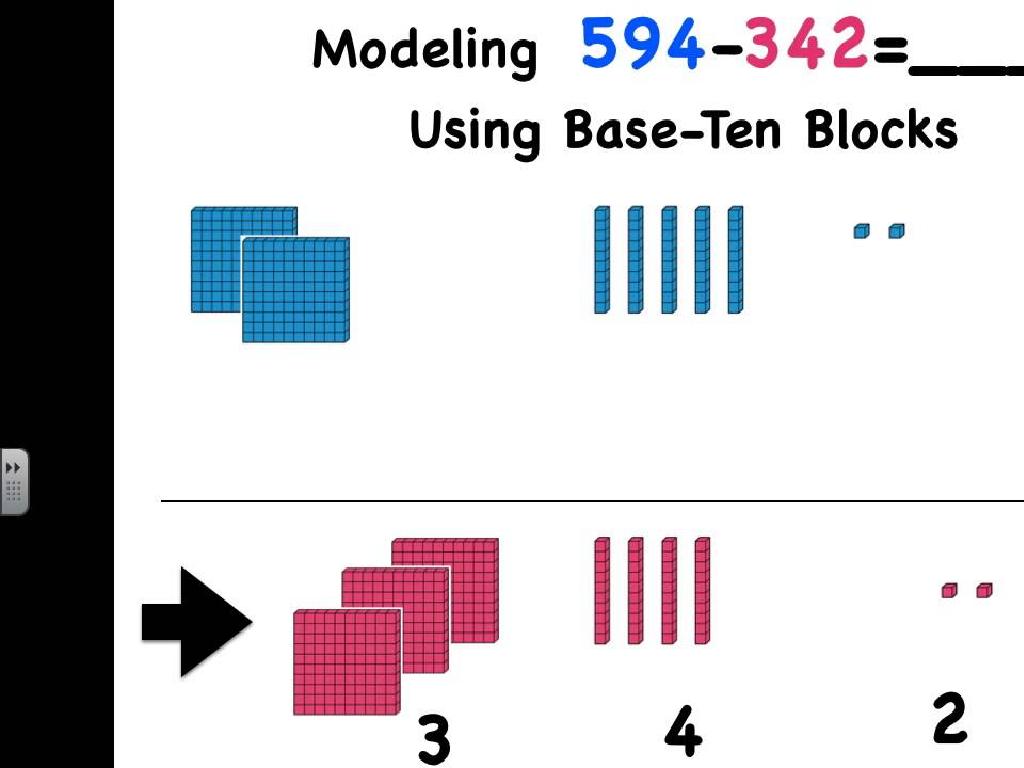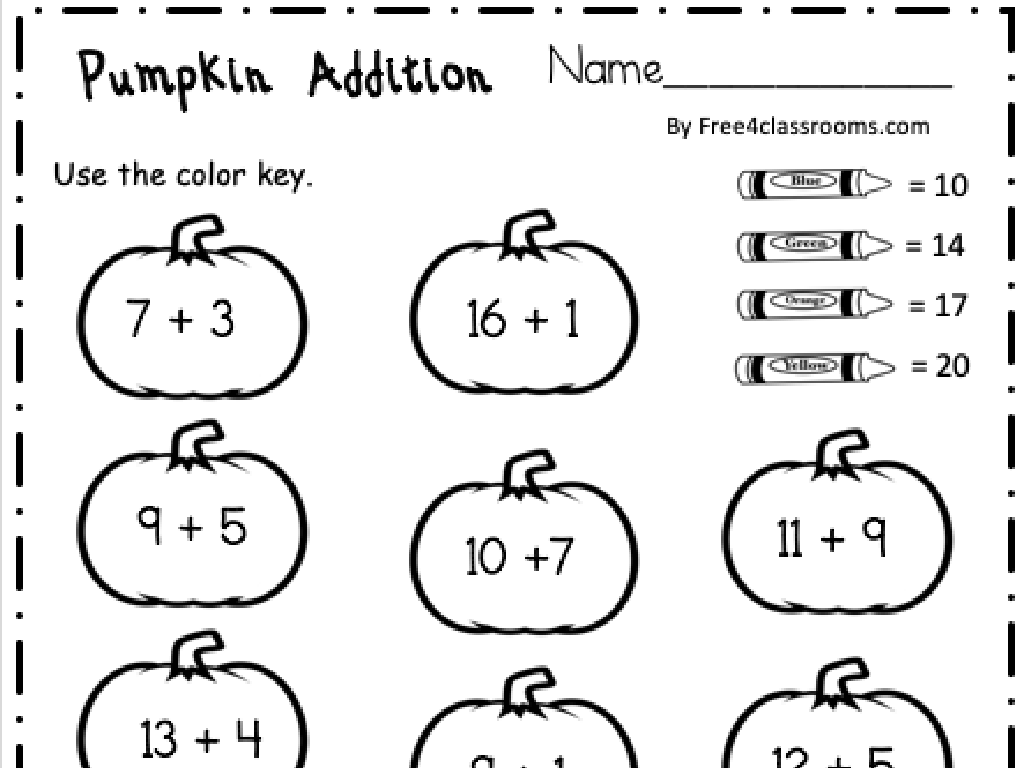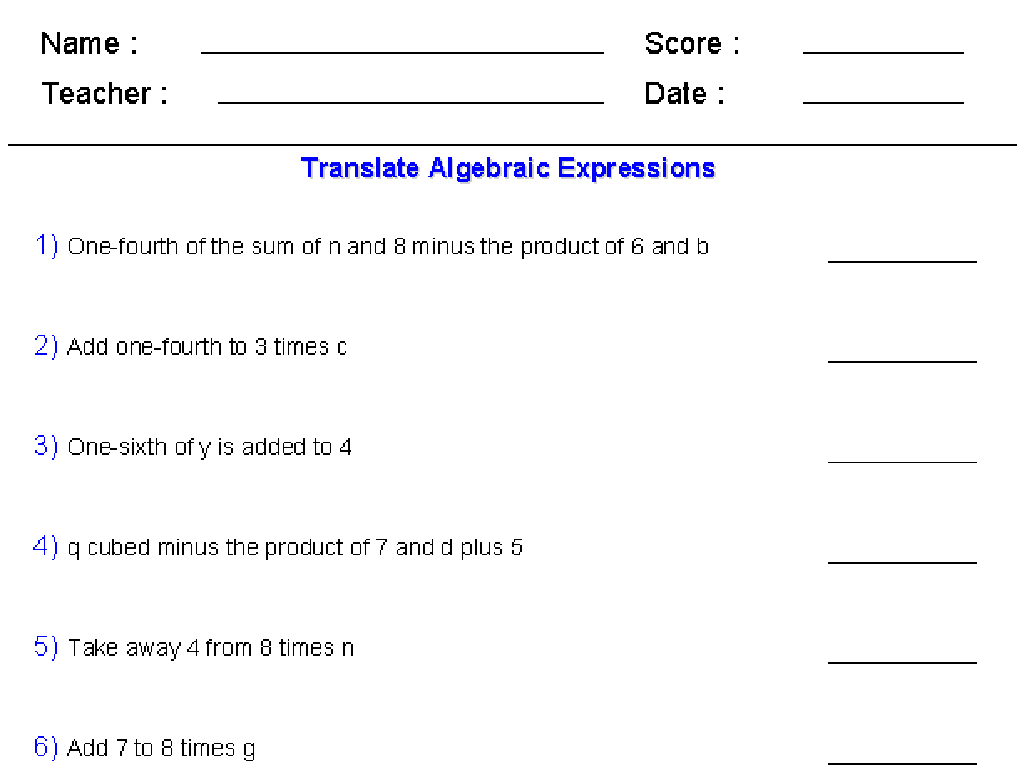Unit Prices
Subject: Math
Grade: Sixth grade
Topic: Consumer Math
Please LOG IN to download the presentation. Access is available to registered users only.
View More Content
Understanding Unit Prices
– What are unit prices?
– Importance of unit prices
– Helps to compare costs and save money
– Calculating unit prices
– Divide total cost by number of units
– Real-life unit price applications
– Grocery shopping: Comparing cost per ounce/liter
|
Unit prices are a crucial aspect of consumer math, allowing individuals to make informed and economical choices when purchasing goods. Understanding unit prices helps consumers compare the cost of products regardless of the quantity or packaging, ensuring they get the best value for their money. Teach students how to calculate unit prices by dividing the total cost by the number of units. Emphasize real-life applications, such as comparing prices of different brands of the same product in a grocery store, to make the concept relatable and practical. Encourage students to practice this skill during their next shopping trip as a fun and educational activity.
Understanding Unit Prices
– Define Unit Price
– Price per single unit of measure, like per ounce or per liter.
– Calculate Unit Price
– Divide total price by the number of units.
– Everyday Unit Price examples
– Price of milk per gallon, or cereal per ounce.
– Comparing Unit Prices
– Find better deals by comparing prices per unit.
|
This slide introduces the concept of unit price, which is a critical skill for making informed consumer decisions. Begin by defining unit price as the cost for one unit of measure, which allows for comparison regardless of package size. Demonstrate how to calculate unit price by dividing the total cost by the number of units. Provide relatable examples such as the cost of milk per gallon or the price of cereal per ounce to illustrate the concept. Emphasize the importance of comparing unit prices to find the best value for money when shopping. Encourage students to practice this skill by looking at different brands or sizes of products and calculating the unit price for each.
Calculating Unit Prices
– Learn the unit price formula
– Unit price = Total price / Quantity
– Example: Calculate together
– If a 10-pack of juice costs $5, unit price is $0.50 per juice
– Lowest price vs. best value
– Sometimes larger packs are cheaper per unit, but consider shelf-life and storage
– Smart shopping tips
– Compare unit prices to save money and avoid waste
|
This slide introduces students to the concept of unit pricing, an essential skill for making informed consumer decisions. Start by explaining the formula for calculating unit price, which is the total price divided by the quantity. Work through an example calculation as a class to solidify understanding. Discuss why the lowest price isn’t always the best deal, emphasizing the importance of considering the unit price for the actual value. Encourage students to think about the practicality of bulk purchases, storage limitations, and the product’s shelf-life. Provide tips for smart shopping, such as comparing unit prices across different brands and package sizes to make the most economical and practical choices.
Comparing Unit Prices
– Understanding unit prices
– Unit price: cost per unit of measure (e.g., per ounce)
– Comparing brands with unit prices
– Example: Brand A ($5 for 10oz) vs. Brand B ($4.50 for 8oz)
– Interactive exercise: Best Buy
– Class activity to determine the most cost-effective product
– Making smart consumer choices
|
This slide introduces the concept of unit prices and how they can be used to make informed consumer decisions. Start by explaining that unit price is the cost of a single unit of measure, which allows for a fair comparison between different sized products. Provide an example by comparing two brands of the same product, showing how to calculate and interpret the unit price. Follow up with an interactive class exercise where students analyze various products to determine which offers the best value. This activity not only reinforces the concept but also encourages practical application of math skills in everyday life. Encourage students to think critically about marketing and packaging, and how unit prices can sometimes reveal a more cost-effective choice than what appears to be a ‘sale’ or ‘bulk buy’.
Unit Prices in Bulk Purchases
– Understanding bulk purchases
– Buying items in large quantities often at a discount
– How to calculate unit prices
– Divide total cost by number of units to find unit price
– Group activity: Bulk buying savings
For the activity, compare unit prices of bulk vs. individual items
– Discuss: Is bulk always cheaper?
|
This slide introduces students to the concept of bulk purchases and how they can affect savings. Begin by explaining what bulk purchases are and why they might be considered economical. Teach students the method to calculate unit prices by dividing the total cost by the number of units. The group activity should involve real examples where students calculate and compare the unit prices of items bought in bulk versus individually to determine which is cheaper. Encourage discussion on whether bulk purchases are always the most cost-effective option, considering factors like storage, waste, and immediate financial outlay. Provide examples of when bulk buying might not be cheaper, such as perishable items or lack of storage space.
Grocery Store Challenge: Find the Best Unit Price!
– Apply knowledge to real-life
– Class activity: Calculate unit prices
– Find and compare unit prices of products
– Use grocery flyers for practice
– Bring in flyers or use online resources
– Determine the most cost-effective options
– Calculate which products give the best value for money
|
This slide introduces a practical class activity where students will apply their understanding of unit prices to a real-world scenario: grocery shopping. Provide students with grocery store flyers (either physical copies or digital versions). Their task is to calculate the unit price of various items to determine which ones offer the best value. This activity will help solidify their understanding of unit prices and why they are important in everyday decision-making as consumers. For the activity, consider having different flyers to cater to diverse learning levels or interests. Some students can compare prices of the same item across different brands, while others might calculate bulk purchase savings. Encourage students to present their findings and explain their reasoning for choosing one product over another based on unit price calculations.
Class Activity: The Unit Price Game
– Engage in the Unit Price Game
– Students form teams for the activity
– Calculate unit prices of given items
– Divide the total cost by the quantity to find the unit price
– Determine the best value for money
– Compare unit prices to decide which item offers the most savings
|
This interactive game is designed to help students apply their knowledge of unit prices in a practical, team-based setting. By working in groups, students will learn to collaborate and communicate effectively while engaging with math concepts. Provide each team with a set of items and their prices along with the quantities. Instruct them to calculate the unit price for each item and then determine which item is the best buy based on the lowest unit price. This will help them understand how to make cost-effective decisions as consumers. Possible variations of the activity could include using real grocery flyers, creating a mock store in the classroom, or using an online simulation. The goal is to make learning about unit prices fun and relevant.
Wrapping Up: Unit Prices
– Recap: What are unit prices?
– Price per single unit of an item, helps in comparing costs.
– Why unit prices matter
– Helps to find the best deal and save money.
– Homework: Compare unit prices
– Look at different items at home and calculate their unit prices.
– Next class: Introduction to Budgeting
|
As we conclude today’s lesson on unit prices, remind students of the definition of unit prices and their significance in making informed consumer choices. Emphasize how unit prices allow us to compare the cost of products regardless of package size, leading to smarter and more economical purchasing decisions. For homework, students should practice this skill by finding items at home, calculating their unit prices, and determining which items offer the best value for money. This exercise will prepare them for the next class on budgeting basics, where they will apply their understanding of unit prices to manage expenses effectively. Encourage students to bring their findings to the next class for discussion.

